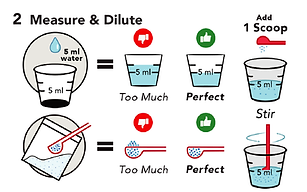
Xylazine Test Strip
Xylazine is a veterinary medication used for sedation and anesthesia. If consumed by humans, xylazine can slow breathing and cause a loss of consciousness that resembles the effects of an opioid overdose. In combination with opioids, xylazine increases the potential for fatal overdose. This makes it challenging to differentiate between an overdose caused by opioids alone, or one caused by a combination. While naloxone will reduce the effects of an opioid overdose, it will not reduce the effects of xylazine.
Quick Reference Guide
In Case Of Emergencies
In the event of a suspected drug overdose, administering naloxone is crucial to counteract potential opioid effects. It's worth noting that naloxone does not reverse the effects of xylazine according to the CDC. However, considering that xylazine is frequently used in conjunction with opioids like fentanyl, it is still recommended to administer naloxone. Promptly calling 911 for further medical assistance is essential, as the effects of xylazine may persist even after naloxone has been administered.
1. The Xylazine Test Strip provides only qualitative, preliminary analytical results. A secondary analytical test should be used to obtain a confirmed result. Gas chromatography/mass spectrometry (GC/MS) is the preferred confirmatory method.
2. The test does not distinguish between drugs of abuse and certain medications.
3. A positive test result may be obtained from certain foods or food supplements.
4. The test device is NOT intended to determine the purity, composition, or safety of a substance.
5. A positive or negative test result is NOT an indication that the substance being examined is safe to use. Many factors come into play when interpreting the result, including but not limited to potential mixtures of substances, solubility, and the pH of the sample.
6. The test shall not encourage the use, supply, or production of illegal drugs or controlled substances in any way. The test is intended for harm reduction purposes. Follow the advice of your local harm reduction or public health agency.
7. The test is NOT to be used to test cocaine, methamphetamine, ketamine, or any other non-opioid substances.
8. There is a possibility that technical or procedural errors as well as other substances and factors may interfere with the test strip (Liquid/Powder) and cause false results.
9. A positive result indicates the presence of xylazine only and does not indicate quantity.
10. A negative result does not at any time rule out the presence of xylazine, as they may be present below the minimum detection level of the test.

%201-02.png)
%2002-02.png)
%2003-02.png)
%2004-02.png)